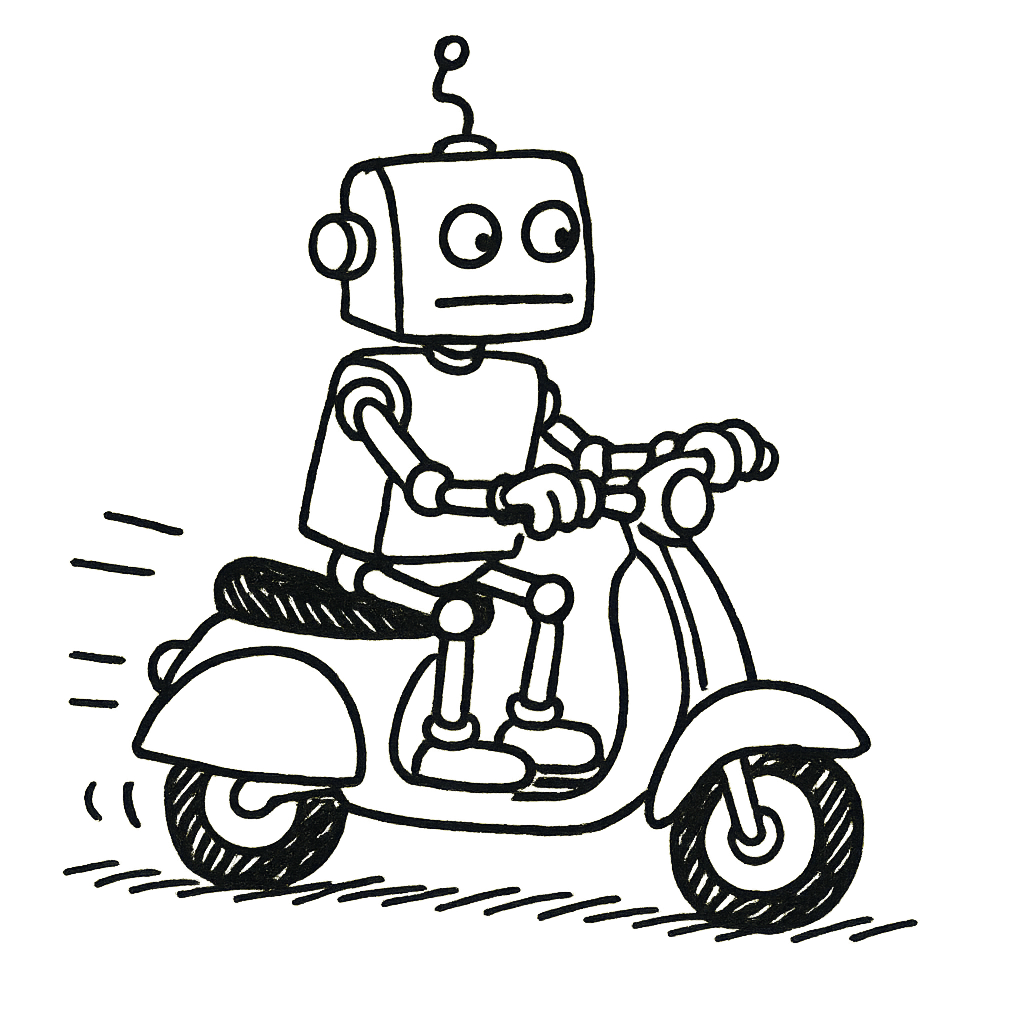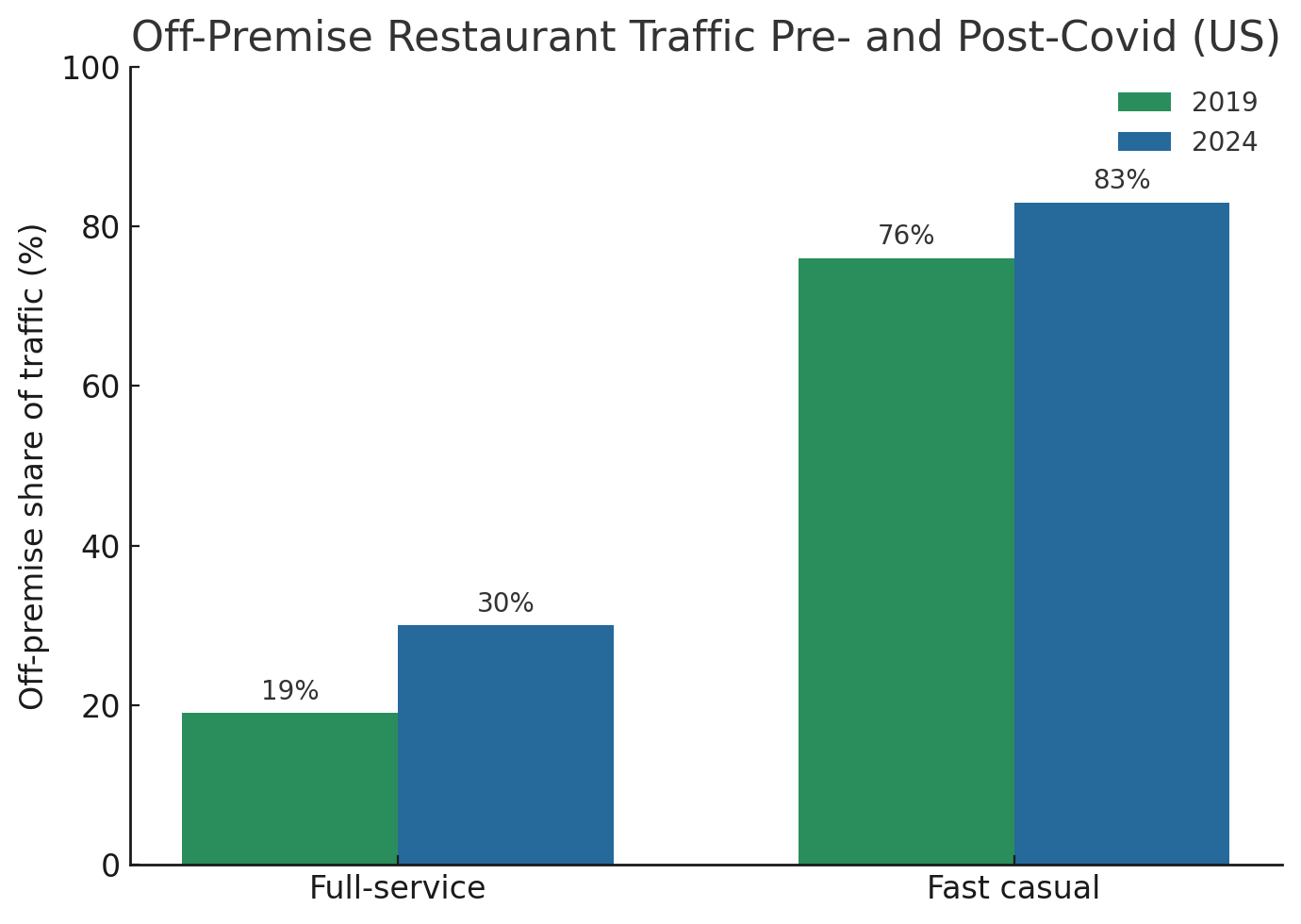The Future of Software isn’t Software
Why marketplace companies can now build everything—and how pure-play software survives
“Ultimately, I’m scared about how much I rely on them, but it’s not like I can quit using DoorDash.” Steve [name changed] is a restaurateur in NYC with five locations spread across the city. Every day his kitchens produce thousands of brined and fried chickens, which are then zipped around the city by a fleet of mopeds with red DoorDash bags strapped to the back.
During Covid those dudes saved his company. When people couldn’t dine in, they ordered out, allowing Steve to keep his employees working. However, the pandemic permanently altered consumer behavior and DoorDash/other delivery services now represent roughly 18 percent of his sales. The issue is that these sales are far less profitable because he has to pay DoorDash their fee and he worries it is cannibalizing repeat sales of customers who used to show up for takeaway.
Before Covid, off-premise was mostly a sideshow. By 2024, it’s the default. Roughly 3/4 of all restaurant traffic is now off-premise and that share is higher than during 2019, even after dining rooms reopened.
In the hypercompetitive world of food, DoorDash offers the most valuable thing you can offer a customer: incremental demand. To get more customers, merchants are willing to suffer even the most grievous of indignities, reduced margins.
A central thesis of this newsletter is that AI reduces creation costs, thus increasing distribution costs. AI makes it relatively trivial for a restaurant to create an online menu, but now you have to convince people to actually go there. An easy way to do that is to put your menu on DoorDash, and allow them to find the customers for you. Aggregated demand is uncopyable, unassailable. It is the ultimate asset in the age of AI.
Once you can offer your customers net new revenue, everything else becomes easier. It has led to a wildly ambitious roadmap from the company. Look at what they’ve announced just in the last few months:
A $1.2 billion acquisition to offer Vertical SaaS for restaurants
A $3.9 billion of a European food delivery company
A new delivery robot vehicle, smart scale for merchants to weigh food, and software platform that allows Doordash to easily plug in autonomous delivery options like Waymo, Robotaxi, or drones.
Offering fulfillment for brands like CVS and Party City. Now brands won’t even need to have physical stores! They can just slap their logo on DoorDash and let them do the rest.
Just one of these options would make me raise my eyebrows. Digesting all of these at once is a level of ambition that I would’ve called foolhardy a few years ago. If they pull this off, they’ll move from being a delivery marketplace to a service where someone just has to have kitchen space and an idea, then DoorDash can do the rest.
This hasn’t happened in the past because as companies scaled, the product had to become more and more generalized, thus leaving space for individualized specialists to pick off customers. So while Toast may do software for all types of restaurants, Slice could do software just for pizza restaurants.
AI fundamentally changes that by giving customers the ability to spin up apps on their own
When I explained to Steve all that DoorDash was planning to do in the future, he wasn’t happy. “I don’t like relying on one tech company that much, but if they can offer me customers, what can I do?”
DoorDash represents an expansion of my idea: AI reduces creation costs, thus increasing distribution costs and the ambition of the product roadmap. Because the single best use case for LLMs today is coding, once founders own a defensible position within a customer, they can rapidly expand in every direction, capturing higher and higher shares of wallet.
In a series of exclusive interviews, I sat down with some of DoorDash’s leadership team to understand how they are going to pull this off (and what it means for early stage founders today).
Keep reading with a 7-day free trial
Subscribe to The Leverage to keep reading this post and get 7 days of free access to the full post archives.




